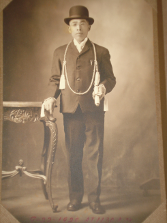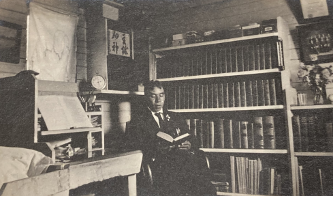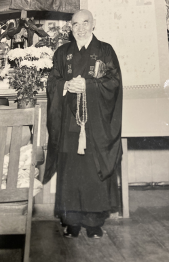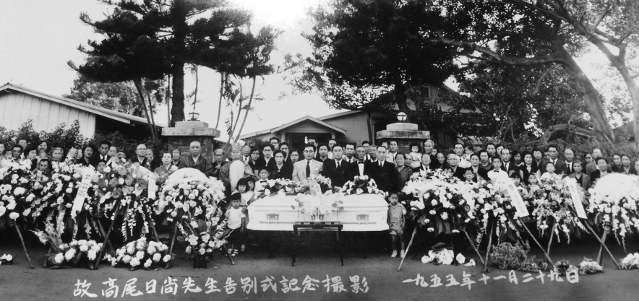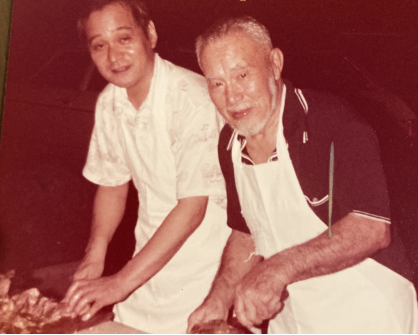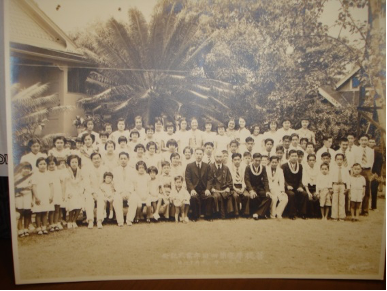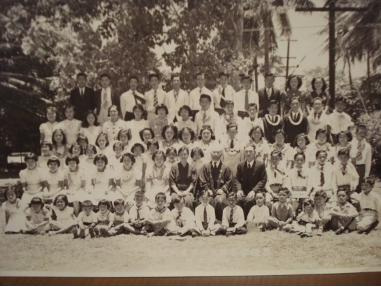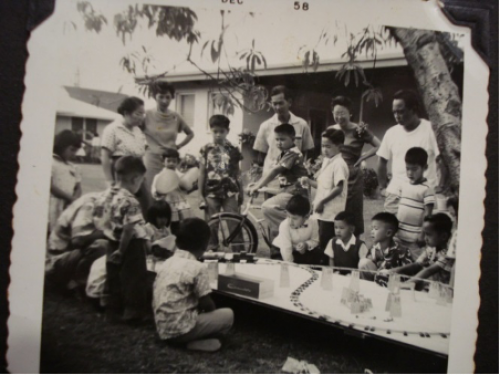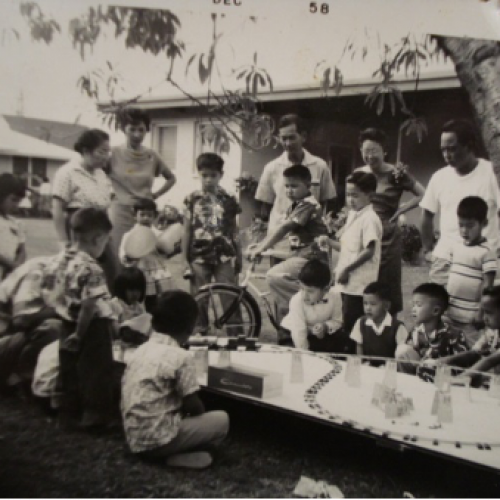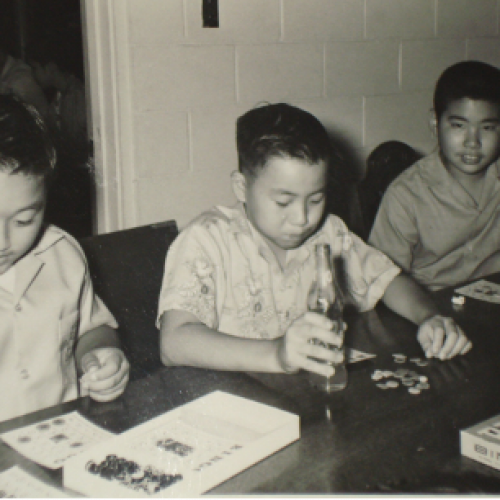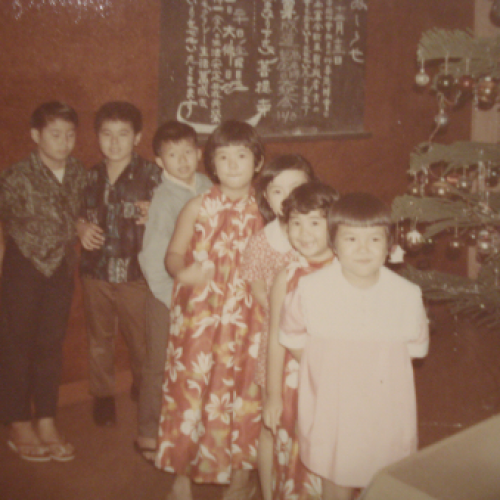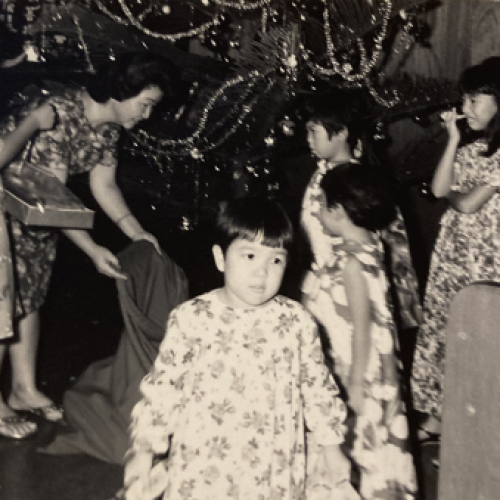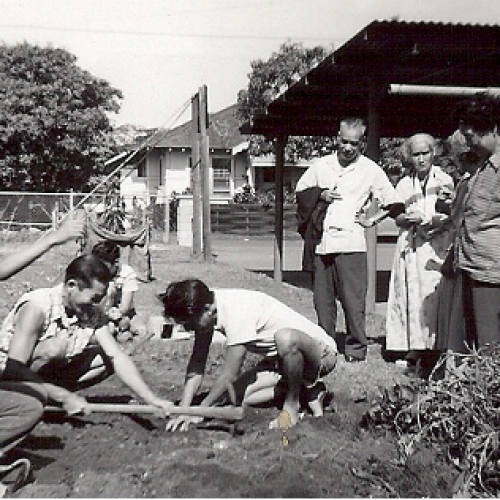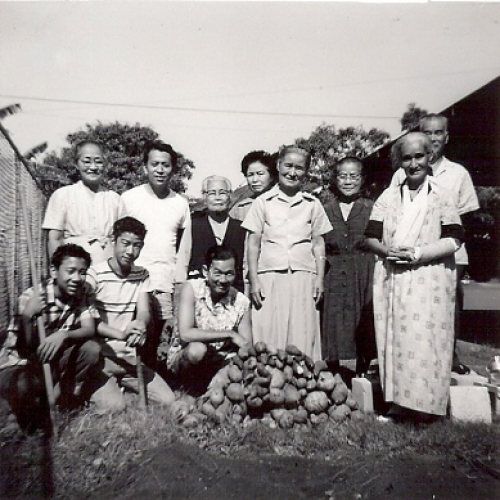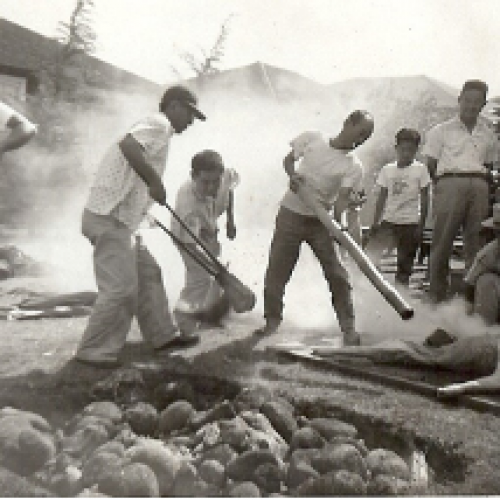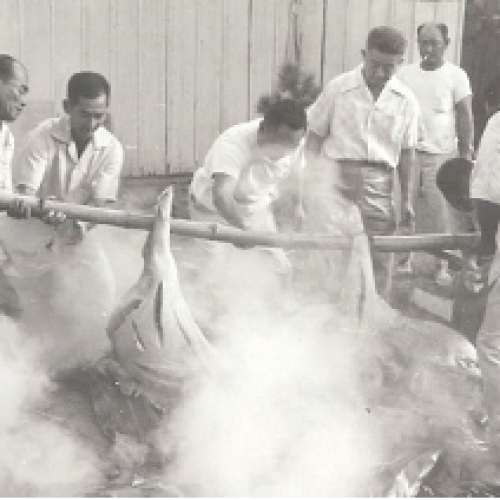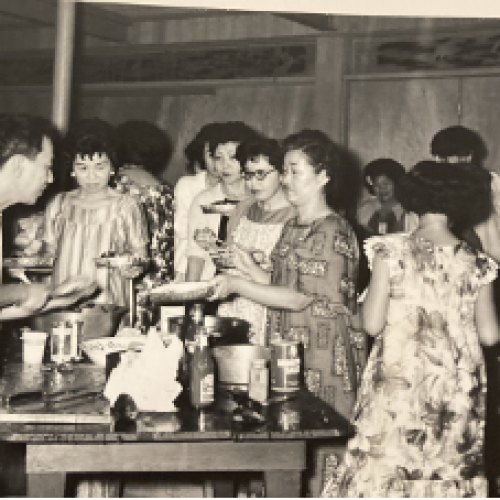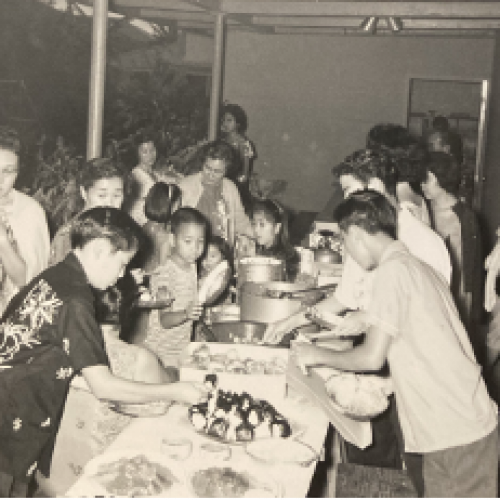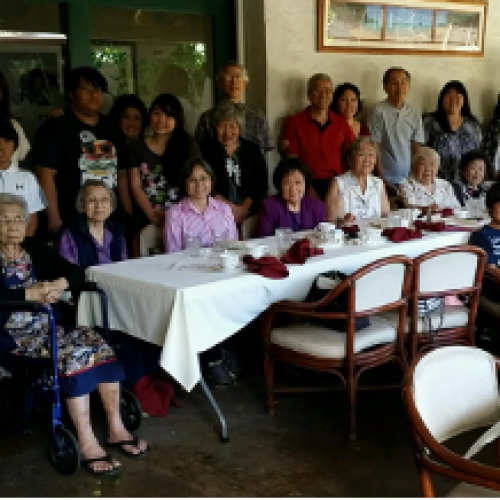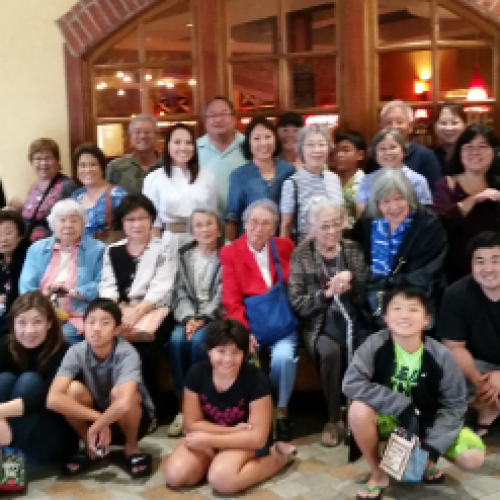
Calligraphy of Yojo Mango
Today, Bodaiji Mission serves a small but dedicated congregation including several centenarians. Our principal teaching is Yojo Manjo which means “Through right living, all will be attained.” Right Living entails balance from the extremes, and maintaining both physical and spiritual health through meditation, daily consumption of omizu (holy water), practicing filial piety, and promoting compassion and welfare in our community. In addition to religious services, Bodaiji Mission supports a number of charitable non-profit organizations and manages the Bodaiji Mission Charitable Endowment Fund with the Hawaii Community Foundation.
Mission
- To teach and promote the doctrines and teachings of Buddhism;
- To promote educational and charitable works;
- To cultivate character and virtue;
- To participate in activities of the community conducive to the promoting of happiness and welfare therein; and
- To operate exclusively for charitable, religious, literary, educational and scientific purposes.
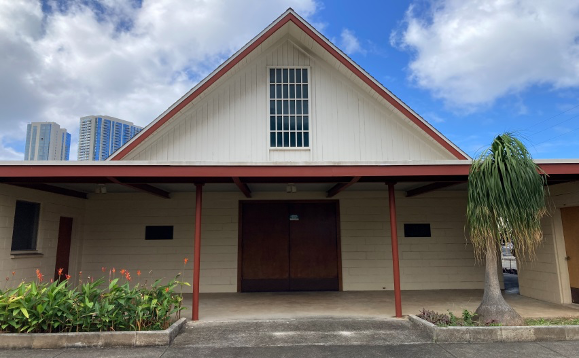
Weekly services
Omairi Service
Every Sunday except for third Sundays, 9:00 – 9:30 a.m.
Silent meditations and the receiving of holy water (omizu).
Oshoko Service
Third Sundays 9:00 – 10:00 a.m.
Meditation during the chanting of sutras, offering of incense, and the receiving of holy water.
Gotan-e (Buddha’s birthday)
First Sunday in April unless a Sunday falls on the 8th, 9:00 – 10:15 a.m.
Jodo-e (Buddha’s enlightenment)
First Sunday in December unless a Sunday falls on the 8th, 9:00 – 10:15 a.m.
History
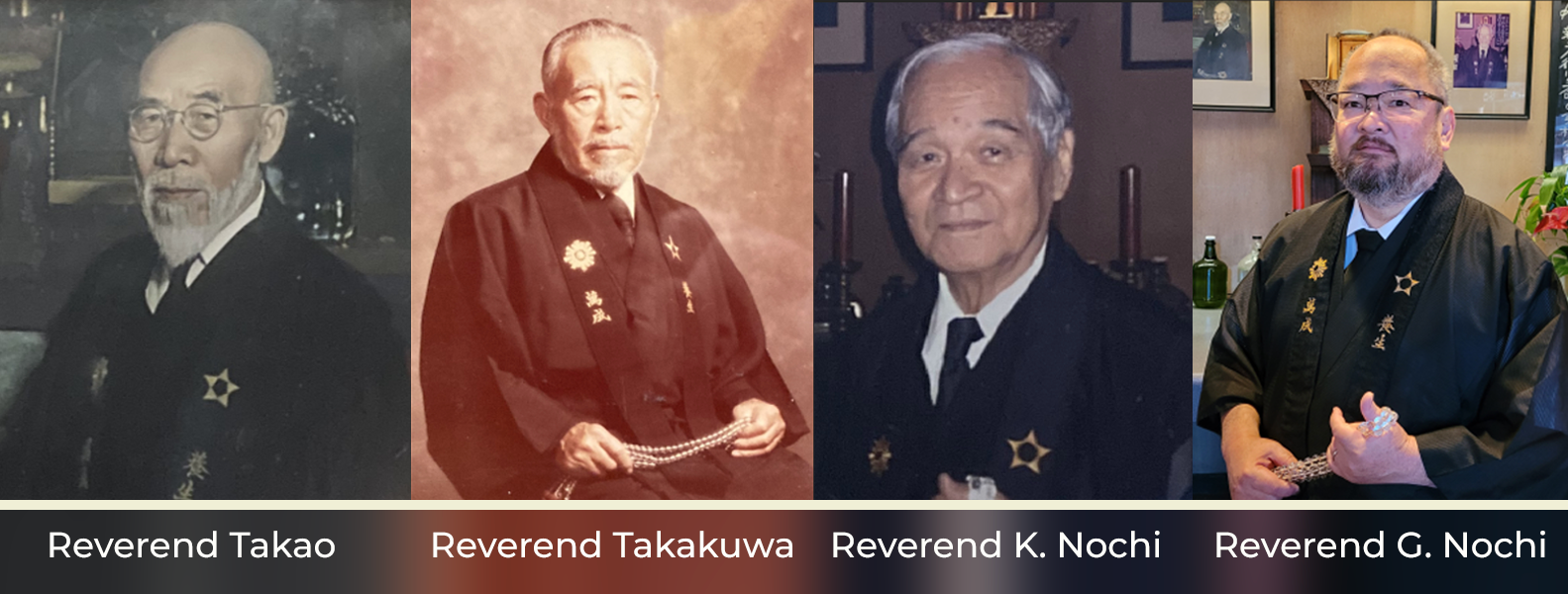
Reverend Takao
In the later part of the 1920’s, Reverend Takao acquired property at 1251 Elm Street in Honolulu and founded an independent church under the name of Bodaiji Mission.
On the mauka side of the property is Bodaiji Mission’s namesake, a Bodhi Tree that traces its lineage to the sacred tree beneath which Prince Siddhartha Gautama attained enlightenment to become The Buddha. The tree was first planted when Bodaiji Mission acquired this property using a cutting from the Foster Botanical Garden’s Bodhi Tree, which was gifted to Mary Foster in 1913 from Sri Lankan Buddhist monk and friend Anagarika Dharmapala.
For the next two and a half decades, he firmly established Bodaiji Mission with a large and loyal congregation along with a flourishing Japanese school. During this time, he developed, refined, and documented his teachings.
Reverend Shimpei Frank Takao, founder of Bodaiji Mission, peacefully passed away on November 27, 1955.
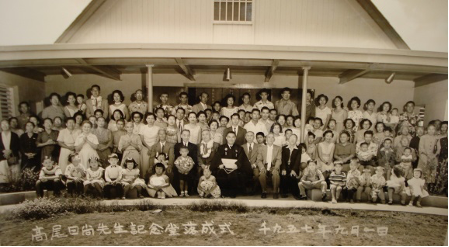
Reverend Takakuwa
Just prior to Reverend Takao’s passing, he requested Roy Takakuwa to succeed him and to lead Bodaiji Mission and its next generation.
At the time, Reverend and Mrs. Takakuwa were very busy with five children and running their bakery business, Liliha Bakery, which they started in 1950.
Despite the demands of work and family, Reverend Takakuwa served for the next three decades.
The original hall and school building were demolished and the Reverend Takao Memorial Hall was constructed in 1957. Today, it still functions as the venue for Bodaiji Mission’s services and activities.
Reverend Takakuwa’s leadership and involvement with Bodaiji Mission continued through to his last days, until his passing in 1985.
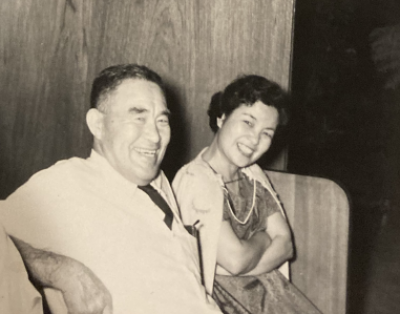
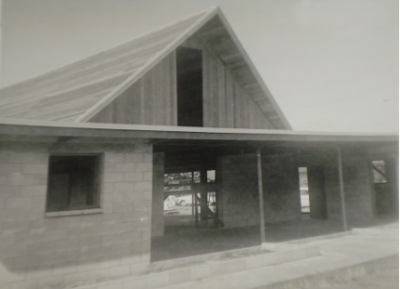
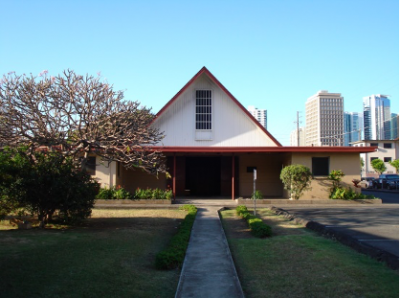
Reverend K. Nochi
Following Reverend Takakuwa’s passing, his son-in-law, Koji Nochi succeeded as sandaime (third-generation) reverend of Bodaiji Mission. Reverend Nochi also worked at and eventually served as president of Liliha Bakery upon Reverend Takakuwa’s retirement, ensuring the continued success of Liliha Bakery through the teachings and practices of Bodaiji Mission.
In 2007, the original tree split in half and toppled over, but today its offspring thrives and continues to serve as an inspiration for Bodaiji Mission and its congregation.
For 28 years until his passing in 2013, Reverend K. Nochi dutifully conducted weekly services . Most important, he was there for many of the long-time elderly members and their families to provide comfort and closure as age and their eventual passing took place.
Reverend G. Nochi
Succeeding Reverend Koji Nochi was Glenn Nochi, Reverend K. Nochi’s eldest son, currently serving as Bodaiji Mission’s yondaime (fourth-generation) reverend. For the first time, an English service reciting and explaining these sutras was conducted by Reverend G. Nochi given the majority of the current membership are not fluent in Japanese. Reverend G. Nochi has also conducted a number of session openings for the Hawaii State House of Representatives, and served as Pack Chaplain when his son participated in Cub Scouts.
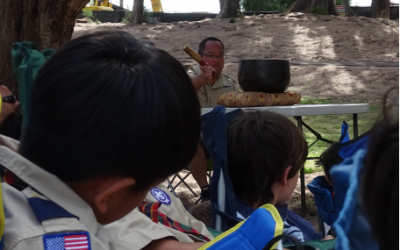
“When I speak to members about what experiences with Bodaiji are most memorable, there is always a sincere expression of happiness, appreciation, and gratitude. For most, the journey with Bodaiji Mission has been through their entire life and over multiple generations. Recollections about growing up and playing with the other kids, getting married, delicious food and the tables of wooden planks and horses used to serve and seat everyone, how the German family across the street told the children not to play outside as that Sunday service was occurring during the bombing of Pearl Harbor, gratitude for good health, ability to attend services in-person for so many years, and the appreciation and comfort provided by the funeral and memorial services in remembrance of their loved ones and families.”
Namu Yojo Manjo, Reverend G. Nochi
Photo Gallery
Upon its founding, Bodaiji Mission served issei and nisei families and was an integral part of these Japanese-American families.
As immigrants, assimilation as Americans was paramount. Yet, equally important was the desire to maintain the Japanese language and culture, as well as customs and morals so that they would not be lost to the next generation. Thus, many Japanese Buddhist churches also ran Japanese Language schools with daily classes following public grade school.
In addition to Buddhist teachings and services, Bodaiji Mission was the venue for social and cultural activities, including play and games for children. Particularly on Hana-hana (“To work”) Services when adults were busy maintaining church grounds and conducting repairs, children had a whole morning of free time and play, and were instructed not to wear their Sunday Best, but rather, their outside play clothes. This served as a fun respite from silent meditation practiced during services.
In 1958, a Keiki Christmas Party was held to provide fun and games for children and to make sure each child left with a present. This was the beginning of a popular and longstanding event for both children and adults. Within a couple of years, the Keiki Christmas Party became the annual Christmas Party filling the main hall and lanai areas with tables of food and drink, a grab bag drawing for children and adults, and a time to enjoy and appreciate each other.
Contact Us
Contact us via email, phone or by completing the form. We look forward to hearing from you.

